Exhibition spaces are scattered throughout the Seochon area, covering the spectrum from quirky non-profit spaces to commercial galleries displaying and selling works by contemporary artists.
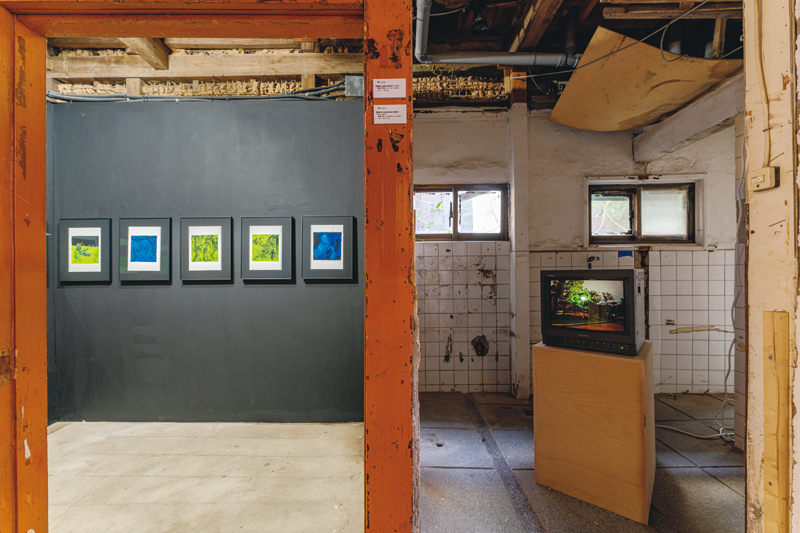
Walkie-talkie-shaking was among the 2022 exhibits at the arts and culture hub BOAN1942. It explored the essence of communication, drawing inspiration from walkie-talkies. Opened in 2007, the Seochon venue displays creative and experimental works of various genres, including photography, painting, installation art, and video art.
ⓒ Goh Jeongkyun
In a quiet alley close to Cheong Wa Dae, the former presidential residence turned museum, an orange brick building against an azure sky presents an eye-catching contrast. Nestled here is The Reference, a cultural space founded by Kim Jeong Eun, the CEO of IANNBOOKS, a photobook publisher. Under the motto “a bookstore with art and exhibitions,” it combines galleries in the basement and glass-paneled first floor with an art bookstore on the second floor.
Kim opened The Reference in 2018 but began her publishing operation in 2007. She is a seasoned observer of a disparate roster of places that have emerged in Seochon, breathing life into the neighborhood’s art ecosystem.
“After a decade of searching, I finally found the perfect location in Hyoja-dong. Despite the changes over the years, Seochon retains the artistic character shaped by its residents. Dotting the winding alleys are architectural firms, design studios, galleries for emerging artists, and artists’ homes. What I like most is that it’s a community that fosters inspiration and collaboration,” she says. As the home and workplace of artists in many different genres, Seochon has developed a robust artistic infrastructure.
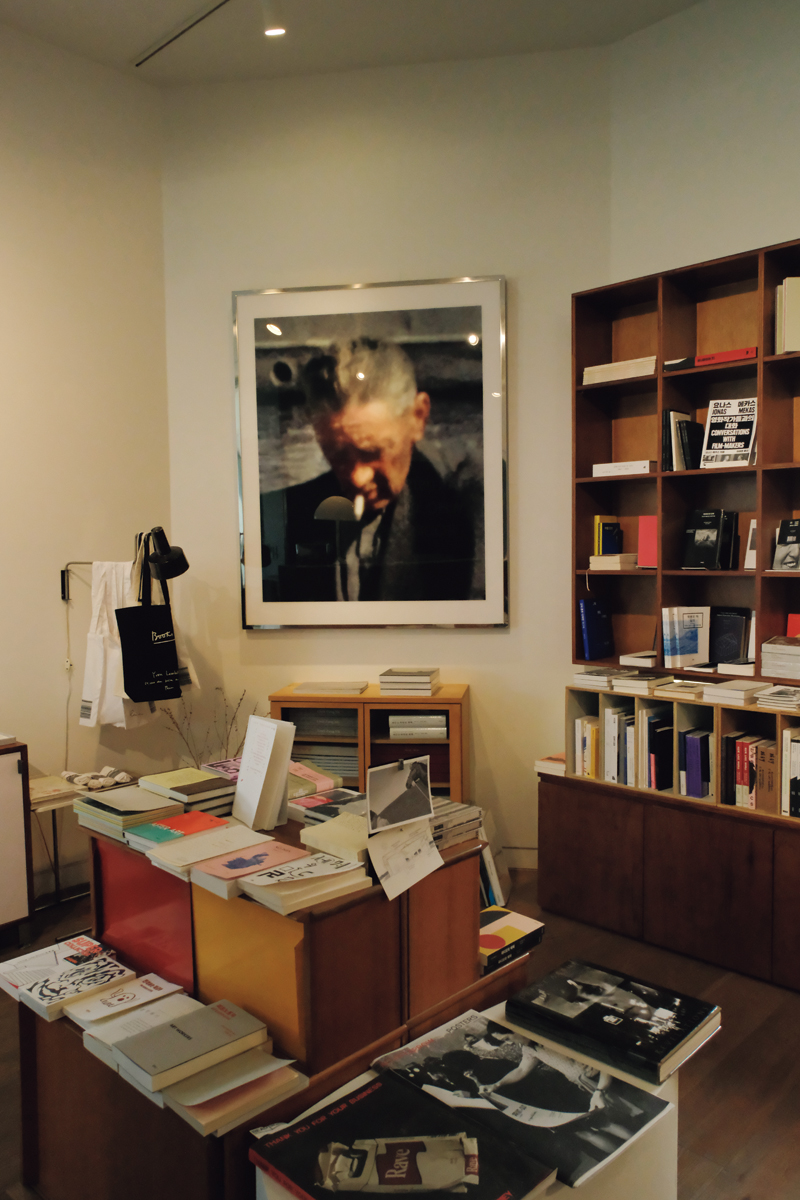
The Reference bookstore aspires to be a platform where people can experience visual art. It has a comprehensive collection of photobooks by domestic and international photographers, as well as photography-related literature.
ⓒ Choi Tae-won
LOCAL OLD-TIMER
“It seems that this area is governed by the same field of energy. In 2007, as if on cue, spaces that have since become representative of Seochon’s art scene began to appear in Tongui-dong and Changseong-dong, all in Hyoja-dong’s vicinity. At that time, I was looking for an exhibition space and stumbled upon this building, then called Boan Yeogwan, an old inn. It was a fortuitous encounter,” recalls Choi Sung-woo, who acquired the lodging. His original plan was to tear down the humble, dilapidated building and put up a new one, incorporating the neighboring property he had already purchased.
However, as destiny would have it, the unexpected happened. Before demolition, Choi had noticed that the ceiling leaked heavily. Sparked by curiosity, he removed the panels for inspection and found an inscription on the roof’s ridge beam that read “May 3, Showa 17 Year [1942].” The serendipitous discovery revealed the building’s rich history as a haven for literary figures of the early modern era, including the poet Seo Jeong-ju. Choi, who had read Seo’s autobiography, soon learned that this very building was where the young poet had stayed when he and fellow poets created the literary magazine Shiin burak.
The former inn was meticulously restored and repurposed into a thriving arts and culture hub named BOAN1942. It now hosts art exhibitions curated by its own team and cultivates emerging artists through its DoLUCK program. Apart from these quests, BOAN1942 organizes the annual Craft Tea Festival, where participants engage in the contemplative ritual of savoring tea to explore its contemporary significance. No less importantly, it showcases the film section of the international art fair Frieze Seoul.
IN FLUX
Factory, established in 2002, relocated to Seochon in 2005. On its fifteenth anniversary in 2017, it was rebranded as Factory2 and adopted a new mode of operation. Members of its curatorial group ponder topics about which they are passionate and decide a theme for collaborations with artists, designers, architects, exhibition curators, and musicians on a wide range of events, including exhibitions, publications, performances, and workshops.
Factory2 is never static. The venue transforms itself constantly, blurring the lines between art appreciation and experience. It morphs from a school hosting classes in art planning to a shop that offers works by creators from diverse genres or a cozy lounge where people gather to read and share stories. By perpetually redefining itself, Factory2 sparks deep curiosity and draws people into its world of art and creativity.
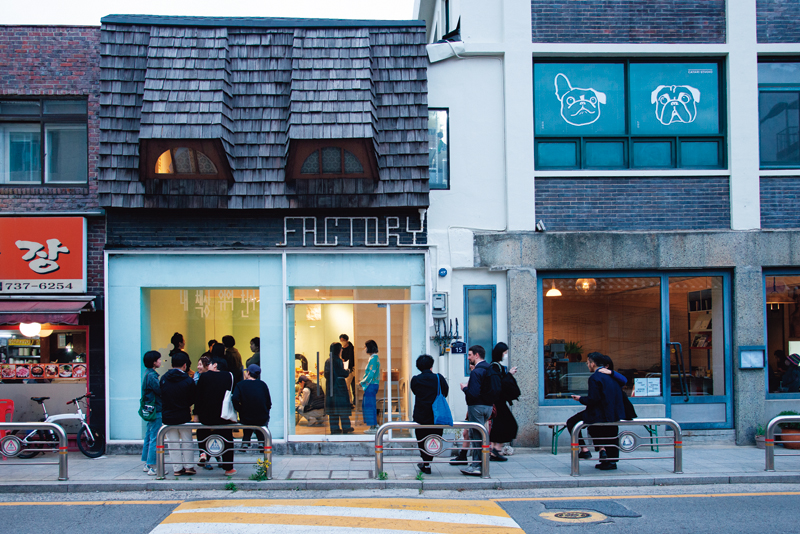
In 2023, Factory2 held the exhibition An Angel at My Table. The venue opened in Seochon in 2005 and presents atypical exhibitions in collaboration with a wide range of artists, including designers, architects, musicians, and dancers.
Photo byDain Kim (Courtesy of Factory2)
ALTERNATIVE EARLY BIRD
SARUBIA, a pioneering alternative space that opened in Insa-dong in 1999, moved to Seochon in 2011 to usher in a series of changes. After changing its name to Project Space SARUBIA, it introduced a membership system and now relies solely on donations from its artist members. As a non-profit exhibition space championing experimental art, it has played a crucial role in diversifying Seoul’s art landscape over the past two decades. Independent curator Sungah Serena Choo highlights SARUBIA’s significance, describing it as “one of the precious independent art spaces that provides artists a place to exhibit so they can take a leap forward.”
Since its inaugural exhibition Imaginative Diary, which featured the humorous yet grotesque sculptures of Ham Jin, SARUBIA has introduced the early works of many of today’s prominent artists, including MeeNa Park, Donghyun Son, Hannah Woo, and Sojung Jun. Choo particularly appreciates SARUBIA’s thoughtful approach to presenting the work of artists in traditional media such as painting.
GALLERIES GALORE
Sitting close to Samcheong-dong, often described as Seoul’s leading gallery district, Seochon is also home to numerous commercial galleries. Unlike museums or non-profit exhibition spaces, these galleries work closely with contemporary artists to build their careers, holding curated exhibitions that introduce new works and encourage sales.
Among the pioneers in the Seochon art scene is Leeahn Gallery. Founded in 2007 by seasoned art collector Hyeryung Ahn, the gallery initially opened in Daegu, a city with a vibrant modern art scene. Its inaugural exhibition commemorated the twentieth anniversary of Andy Warhol’s passing. In 2013, it expanded to Seoul and established a branch in Changseong-dong. Its assertive approach soon propelled it from a regional gallery to a prominent player on the Korean art scene.
Leeahn Gallery has consistently displayed the works of renowned international artists, including Alex Katz, Damien Hirst, and Elizabeth Peyton, while representing leading Korean artists, such as Nam June Paik, Lee Kang-So, and Lee Kun-Yong.
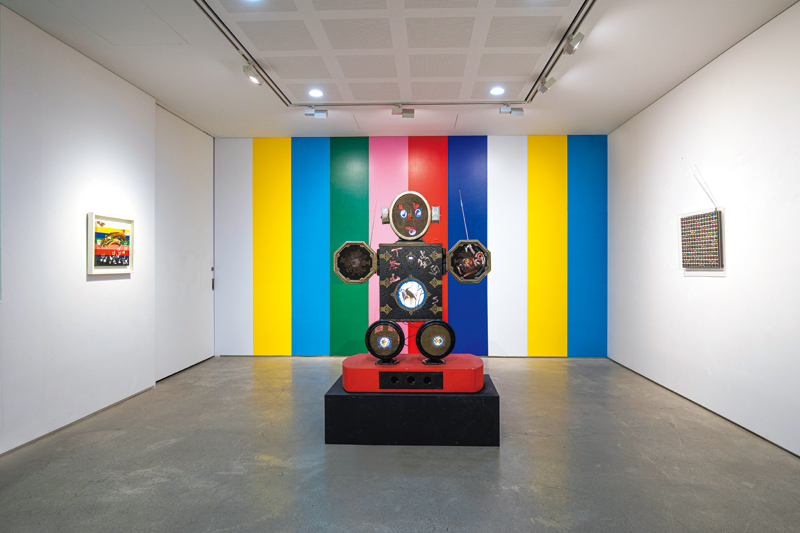
The Nam June Paik exhibition at Leeahn Gallery, held from December 2020 to January 2021, explored the artist’s broad oeuvre. By continually hosting exhibitions of renowned artists from Korea and around the world, Leeahn Gallery enhances people’s understanding of contemporary art.
Photo bySi Woo Lee (Courtesy of Leeahn Gallery)
Launched in 2012, Space Willing N Dealing relocated to Changseong-dong in 2019. It was a strategic move to profit from the cultural advantages of the Seochon area. “At our former location in Bangbae-dong, we lacked the cluster of nearby galleries, which meant that visitors only flocked to specific events like exhibition openings or performances,” said Director Kim Inseon. “But Seochon, being close to Gyeongbok Palace and Samcheong-dong, benefits from a robust gallery presence in the vicinity, ensuring a steady stream of walk-in visitors.”
Since 2022, Space Willing N Dealing has become a full-fledged commercial gallery that represents promising young talents such as Jinu Nam, Lee Sejun, and Chang Sungeun. Situated on the second floor of a building on a busy six-lane road, the gallery is a dynamic space that holds over ten solo and group exhibitions annually and serves as a stage for the experimental works of artists from different genres and backgrounds. It also holds talks where visitors can directly discuss works with the artists and curatorial workshops that provide insights into the intricacies of exhibition planning.
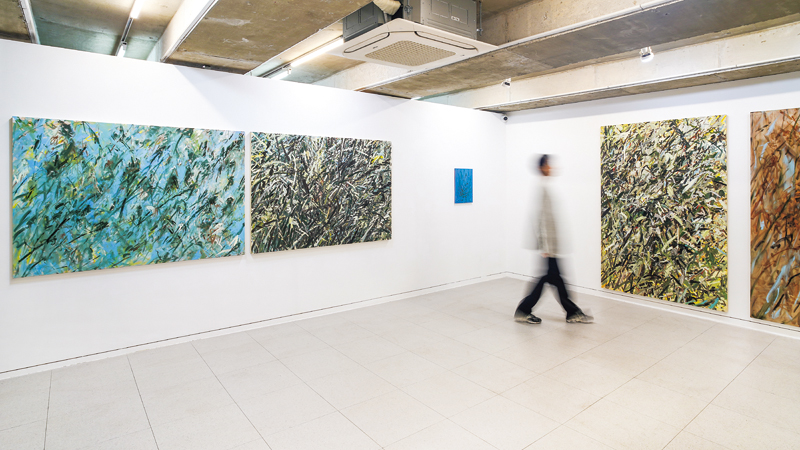
Painter Kwon HyeSeong’s solo exhibition People Without Umbrellas, held this March at Space Willing N Dealing, showed a fusion of Eastern and Western painting styles. The venue discovers promising young Korean artists and offers a range of support programs.
Photo byHan Hwangsu (Courtesy of Space Willing N Dealing)
Director Kim Heejung opened drawingRoom in 2019 and moved the gallery to Seochon three years later. She considers it the perfect location. “A drawing room is where guests are received. In the same vein, we want to bring art into everyday life. The tranquility of Seochon with its harmony of art, nature, and everyday life, seemed to match my ideals for the gallery. I believe the same sentiment is at work in the small, unique shops that have been in this area for so long.” Since the gallery’s opening, Kim has been passionately supporting emerging artists. Her goal is clear: to discover new artists and help them make their debut.
Thanks to the endeavors of art spaces big and small, experimental and mainstream, Seochon has blossomed into a vibrant hub of diversity in the Korean art scene.
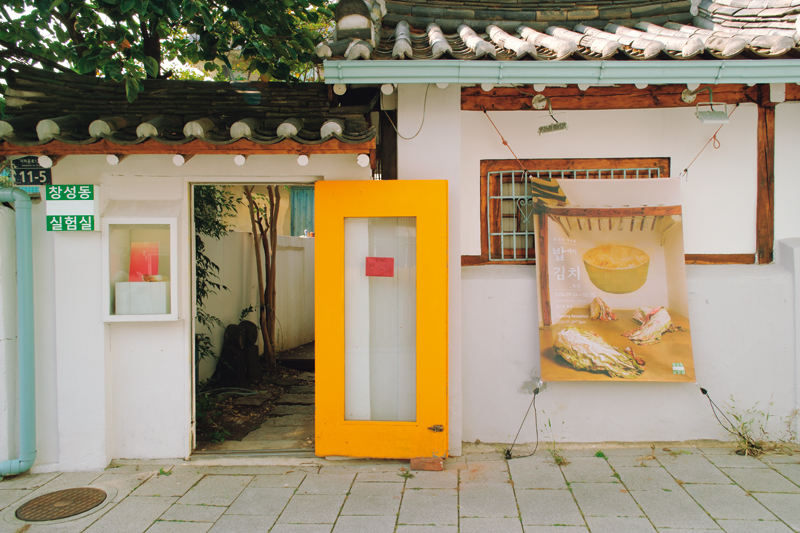
Changseong-dong Laboratory is a gallery that engages in cultural experimentation from various perspectives. It is run by physicist Kiejin Lee, a professor at Sogang University, who is also known as the father of CL, leader of girl group 2NE1.
ⓒ Choi Tae-won
An Dong-sun Art Journalist